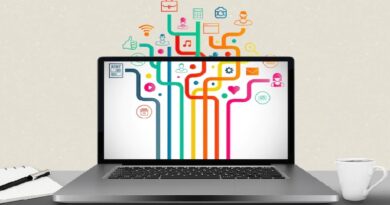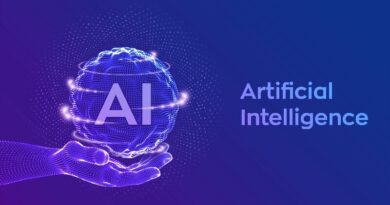How Does AI Help Human Resources Department?
As HR leaders try to improve the union of digital and human work, one priority emerges: developing eloquence in Artificial Intelligence (AI) while rethinking how human resources might be more instinctual, human, and personal.
Even though just 37% of businesses have incorporated AI in some form, the worldwide artificial intelligence software market is expected to increase by 154 per cent year over year.
We’ve uncovered several examples of how AI is being used to improve HR procedures, whether you’ve already invested in AI or are considering it.
How Artificial Intelligence Is Transforming HR?
AI Improves The Candidate Experience
Human resources departments should use scalable AI technologies to connect companies with employees and prospects on a human level. Companies will see significant, measurable, and immediate results in lowering hiring time, boosting recruiter productivity, and providing a smooth, enhanced candidate experience in this area.
Companies, for example, typically need candidates to re-enter the same information throughout the new-hire process. Candidates may be left with a negative impression due to this task’s repeated, monotonous character. Companies are utilising artificial intelligence to assist candidates in transferring information from their resumes to brilliant digital forms, reducing redundancy. Candidates will be able to complete and submit their applications more quickly, resulting in a more pleasant application process.
Additionally, firms that place a premium on the applicant experience have invested in AI to aid in the scanning of a candidate’s previous job experience and interests. Businesses can better match candidates to roles that are a good fit for them.
Resources And Decision-Making Based On Data
HR employees can also benefit from artificial intelligence because it provides data-backed insights and resources gathered directly from employees. As a result, HRMS can adapt and deliver the employee experience that the workforce wants, lowering attrition and increasing employee engagement.
In light of the epidemic, connecting employees inside an organisation is more critical than ever. Companies may use AI to link their entire employee population and better understand their demands. HR staff may then swiftly and consistently build a more pleasant employee environment after their needs have been defined.
Using Chatbots To Increase Staff Engagement
Employees and HRMS professionals can keep their engagement dialogue continuing using AI-powered Chatbots. Chatbots can assist measure and analysing employee sentiment daily, which can help determine employee engagement.
Employees are more willing to engage in customised interactions with Chatbots because they give a natural, human-like form of communication. Once discussions have been analysed and utilised, the HR department can better measure the employee’s specific issues, wants, and needs.
As a result, chatbots enable human resources staff to understand employee attitudes better, allowing them to resolve any potential roadblocks. Employees will be more engaged, and attrition will be lower if they demonstrate that their thoughts and voices matter.
Analytics In The Workforce
AI and machine learning are becoming increasingly visible as more companies turn to labour analytics and planning. Absences, unforeseen schedule changes, and open shifts, for example, can all influence key performance indicators when using real-time analytics.
Furthermore, AI enables human resources managers to handle problems more effectively and can lead to better decision-making that influences the success of the organisation and its employees. HR department can address and prevent problems before they emerge this way.
Taking Advantage Of Enterprise Workforce Data
HR may use AI to anticipate employee potential, success, and overall engagement based on transactional workforce data. This allows for more effective dialogues between teams, which improves employee satisfaction, retention, and performance.
AI can be used to:
● Make schedules that are more intelligent and personalised
● Continually fulfil administrative requests
● Review time-off and shift-swap requests
This allows individuals to manage their work/life balance better. Still, it also frees up time for managers to focus on higher-level responsibilities such as engaging with clients and training teams.
Making A Decision
Artificial Intelligence (AI) can assist employees in better understanding their moods. Employees are sometimes unable to deliver their best due to a heavy workload. Artificial intelligence can be taught to provide personality and behaviour insights. Individuals can then use this approach to make more informed decisions.
Retention Of Employees
AI can assist the human resources department to determine the causes of layoffs and retaining more personnel. AI-based technologies, believe it or not, can assist in the management of a happy staff.
Conclusion
Artificial intelligence’s impact on human resource management extends to unknown use cases and difficulties. It helps people with their jobs by lending a hand. Artificial Intelligence is infiltrating every industry imaginable. Finance, banking, computers, marketing, and management are all areas of interest. AI is here to stay, thanks to its unbiased outcomes and ability to be developed further.




